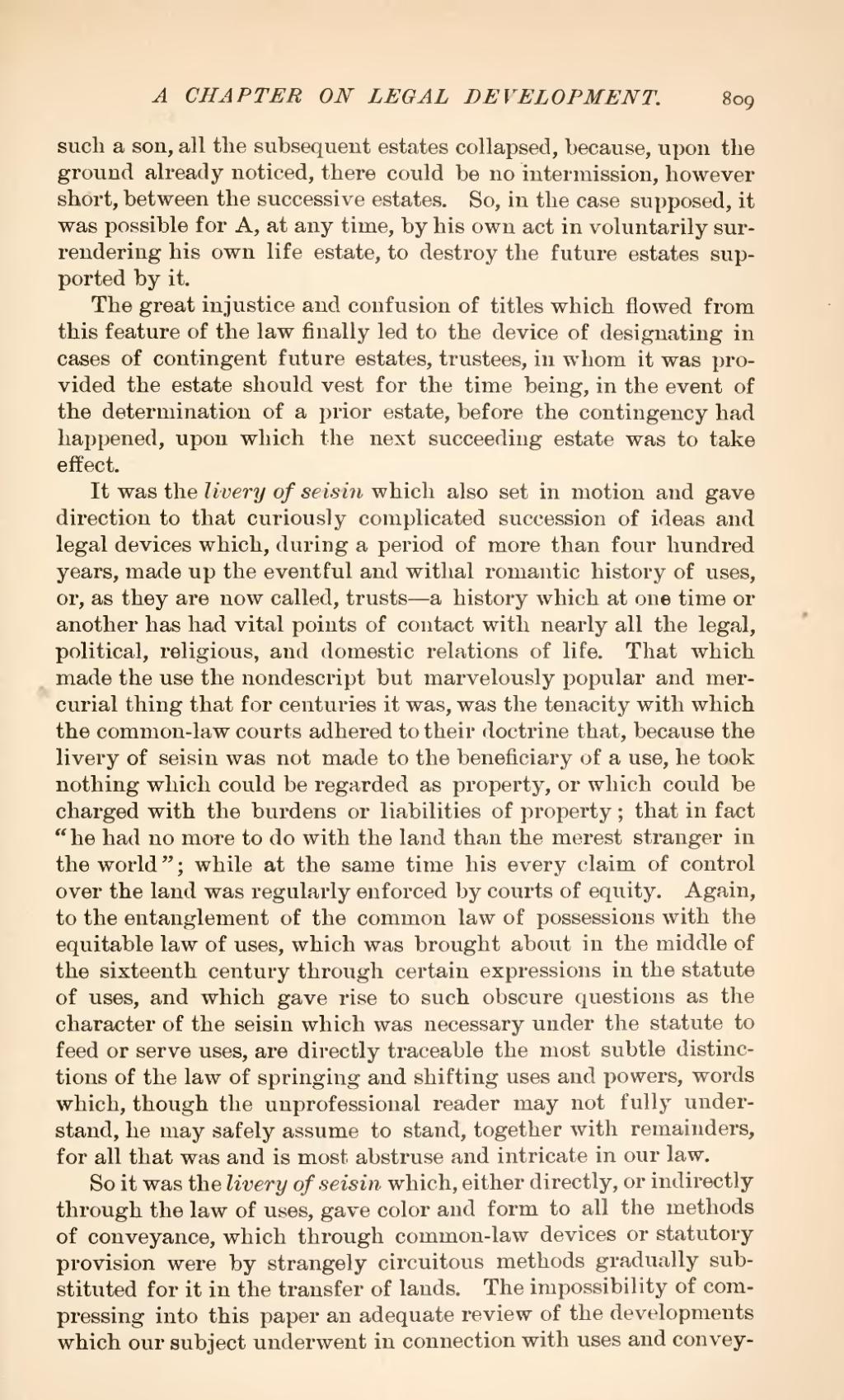such a son, all the subsequent estates collapsed, because, upon the ground already noticed, there could be no intermission, however short, between the successive estates. So, in the case supposed, it was possible for A, at any time, by his own act in voluntarily surrendering his own life estate, to destroy the future estates supported by it.
The great injustice and confusion of titles which flowed from this feature of the law finally led to the device of designating in cases of contingent future estates, trustees, in whom it was provided the estate should vest for the time being, in the event of the determination of a prior estate, before the contingency had happened, upon which the next succeeding estate was to take effect.
It was the livery of seisin which also set in motion and gave direction to that curiously complicated succession of ideas and legal devices which, during a period of more than four hundred years, made up the eventful and withal romantic history of uses, or, as they are now called, trusts—a history which at one time or another has had vital points of contact with nearly all the legal, political, religious, and domestic relations of life. That which made the use the nondescript but marvelously popular and mercurial thing that for centuries it was, was the tenacity with which the common-law courts adhered to their doctrine that, because the livery of seisin was not made to the beneficiary of a use, he took nothing which could be regarded as property, or which could be charged with the burdens or liabilities of property; that in fact "he had no more to do with the land than the merest stranger in the world"; while at the same time his every claim of control over the land was regularly enforced by courts of equity. Again, to the entanglement of the common law of possessions with the equitable law of uses, which was brought about in the middle of the sixteenth century through certain expressions in the statute of uses, and which gave rise to such obscure questions as the character of the seisin which was necessary under the statute to feed or serve uses, are directly traceable the most subtle distinctions of the law of springing and shifting uses and powers, words which, though the unprofessional reader may not fully understand, he may safely assume to stand, together with remainders, for all that was and is most abstruse and intricate in our law.
So it was the livery of seisin which, either directly, or indirectly through the law of uses, gave color and form to all the methods of conveyance, which through common-law devices or statutory provision were by strangely circuitous methods gradually substituted for it in the transfer of lands. The impossibility of compressing into this paper an adequate review of the developments which our subject underwent in connection with uses and convey-
